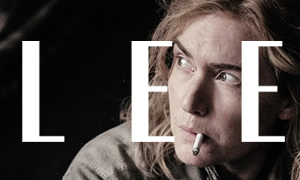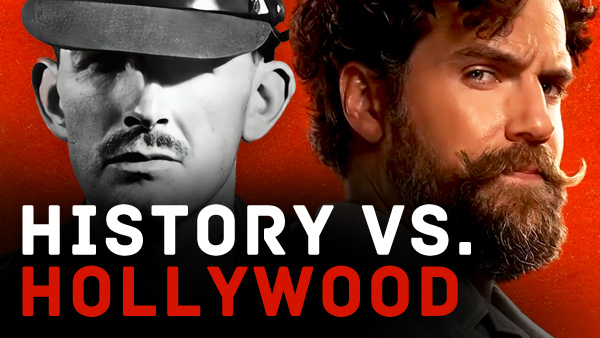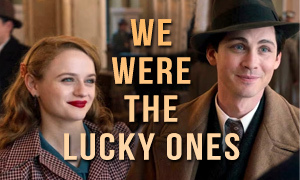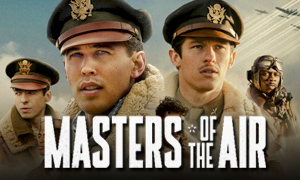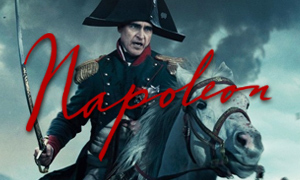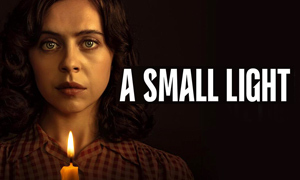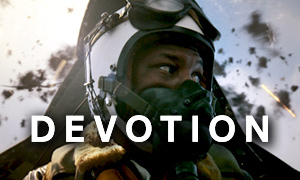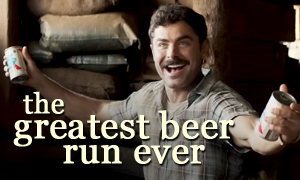Saving Private Ryan: History vs. Hollywood
Is Saving Private Ryan based on a true story?
The movie doesn't explicitly state that Saving Private Ryan is based on a true story or whether Private James Francis Ryan is a real person. That's because while it was inspired by a similar scenario, most of what unfolds after the D-Day scenes in the movie is fictional. "The story of Saving Private Ryan is really the story of a terrible tragedy that happens on June 6, 1944," says director Steven Spielberg, "not just the tragedy of D-Day, but the tragedy of brothers killed in action very close to the same day, a couple of them on the same day." The movie's depiction of the D-Day landing is the most historically accurate part of the film. As for the rescue of Private James Ryan, that portion of the movie was loosely inspired by a similar real-life scenario, the 1944 extraction of Sergeant Frederick "Fritz" Niland. -War Stories: Mark Cousins talks to Steven Spielberg
The initial idea for Saving Private Ryan came about in 1994 when the wife of screenwriter Robert Rodat gave him Stephen Ambrose's bestseller D-Day: June 6, 1944: The Climactic Battle of World War II. While he was in the middle of reading the book, he came across a war memorial monument in a small New Hampshire village. Rodat was stunned when he noticed the repeated last names of brothers who had died in combat. Ambrose's book described a similar family and its sons, the Niland brothers, two of whom had died in WWII (a third was believed to have been killed in action but was liberated from a Japanese POW camp a year later). After the Army learned of their deaths, the youngest brother, Fritz Niland, was extracted from France and sent back to the U.S. He became the inspiration for Matt Damon's character, Private James Francis Ryan. Like the real-life Fritz Niland, the movie's Private Ryan was a paratrooper in the 101st Airborne Division.
Is the overall depiction of the D-Day landing in Saving Private Ryan historically accurate?
Saving Private Ryan's historical accuracy in the opening sequence has been praised by both WWII historians and survivors of the D-Day landings. Some veterans of D-Day were reportedly unable to sit through the film's D-Day scenes and instead had to leave the theater. The Department of Veterans Affairs took more than 100 calls on its counseling line from veterans seeking professional help after seeing the movie. Charlie Company's experiences in the early scenes of the movie, including the seasickness in the landing crafts, the large number of casualties they endured as they exited the crafts, and the struggle in linking up with the nearby units on the shore are all true to history.
Even many of the minor details, including the sound of the bullets and the unique "ping" of the American soldiers' M1 Garand rifles ejecting their clips, are accurately recreated in the film. Forty barrels of fake blood were used to reflect the color of the water. The correct codenames for the different sectors of Omaha Beach were also used.
This isn't to say that the opening sequence of Saving Private Ryan is free of inaccuracies. One of the biggest is the fact that the movie's Omaha Beach landing is significantly compressed for time. It took much longer than 20 minutes for the Allied soldiers to break through the German lines. By the time the soldiers blew up the rows of barbed wire with Bangalore torpedos and rushed up the hill, this would have been several hours into the battle. Also, the real-life names of the men of Company C (Charlie Company) are not used in the movie. For example, Company C is led by Captain John H. Miller (Tom Hanks) in the film, while in real life, Company C was commanded by Captain Ralph Goranson.
Unlike what's seen in the movie, the real-life Company C did not end up directly participating in the clearing of Dog One, the beach exit leading to the village of Vierville. Also, Charlie Company's Task Force B, who we follow in the movie, likely landed on the part of the beach codenamed Charlie Sector, despite the movie showing them landing on Dog Green Sector. It's possible that Steven Spielberg had them land on Dog Green Sector so that the elevated carnage in that area would help to heighten the drama in the film.
Are the landing crafts in the movie depicted accurately?
The filmmakers used 12 authentic WWII landing crafts, including 10 LCVPs and 2 LCMs. However, while authentic to the time period, these crafts are stand-ins for the British LCAs that were actually used during the Omaha Beach landings. The movie inaccurately shows an American driving one of the crafts. The Saving Private Ryan true story reveals that they were actually driven by British servicemen. -History Buffs
Were soldiers really shot and killed while they were deep underwater after jumping off the landing crafts?
No. As the soldiers jump off the landing crafts in the movie, we see several of them sink to the seafloor under the weight of their waterlogged equipment. As they are trying to shed their equipment while deep underwater, several of them are struck and killed by German bullets. In researching the Saving Private Ryan true story, we discovered that this would not have happened in real life, as it defies Newton's First Law of Motion, which states that an object in motion stays in motion unless acted on by an outside force. In reality, when bullets hit water they lose all their momentum. The bullets in the movie would have hit the water, slowed drastically, and then sunk harmlessly to the bottom. Underwater was actually one of the safest places the soldiers could have been to protect them from the German gunfire. -History Buffs
Are the Omaha Beach obstacles depicted accurately in the movie?
In the Saving Private Ryan movie, we see various German-placed beach obstacles during the D-Day landing sequence. This includes crisscrossed metal beams known as hedgehogs and tripod-like log structures nicknamed Rommel's asparagus. It's true that both were used by the Germans to obstruct the amphibious landings of Allied troops. However, the long log obstructions with Teller mines on the end that we see in the movie (pictured below) are shown in the wrong direction. The tip of the long log should have been pointing inland, not out to sea. This way, when the tied was up and a landing craft approached, the craft would slide up the log and hit the mine.
I heard that actual amputees were used to portray the maimed soldiers during the D-Day landing. Is that true?
Yes. 20 to 30 amputees were used to portray the soldiers who were maimed during the Omaha Beach landings in the movie. -Independent
After the Allies broke through the enemy lines on the beach in the movie, what were the two enemy soldiers saying before they were executed?
Like most people, I had watched this scene without ever actually knowing what the enemy soldiers were saying. However, the translation demonstrates just how much history Steven Spielberg packed into the movie. Not only do we see the harsh truth that American soldiers committed atrocities too, a translation of what the two soldiers are trying to tell the Americans reveals that they are not German soldiers. They are conscripted Czech soldiers who were likely forced to fight for Germany after Germany conquered Czechoslovakia. Many such soldiers were forcibly drafted from POW camps. Below is what the two men were actually saying in Czech before they died.
"Please don't shoot me! I am not German, I am Czech, I didn't kill anyone! I am Czech!"
Was Saving Private Ryan's D-Day invasion shot on the beaches of Normandy, France?
No. The filmmakers were not permitted to shoot on Omaha Beach in Normandy, as it is a historic landmark. Instead, they shot the D-Day invasion scenes in Ireland on Ballinesker Beach, just east of Curracloe, County Wexford. Steven Spielberg felt that it was an extremely close match to Omaha Beach.
Were more countries involved in the D-Day landings than shown in the movie?
Yes. While the movie focuses on the American landings, specifically that of Charlie Company on Omaha Beach, the Saving Private Ryan true story reveals that other Allied countries were involved in the June 6, 1944 landings in Normandy, including Great Britain and Canada. U.S. forces landed on Utah and Omaha Beaches, British forces landed on Gold and Sword Beaches, and Canadian forces landed on Juno Beach. See the map of the D-Day landings by country below. The United States and Britain both landed approximately 54,000 troops. Canada landed 21,400 troops. Some historians have criticized the movie's failure to include these other countries, given their significant contributions.
The estimated number of allied deaths during the 24-hour period known as D-Day is roughly 4,414 (2,501 Americans and 1,913 Allies). The exact numbers have varied significantly over the years and will likely never be known. Many of the troops that landed on D-Day ended up with other companies and perished later in the war, while the bodies of others were lost after being swept out to sea. -History.com
Was there really a directive in place to protect lone remaining family members from military duty?
Yes. In the movie, the lengths that the Army goes to retrieve Private James Francis Ryan (Matt Damon) might seem a little far-fetched. However, checking Saving Private Ryan's historical accuracy reveals that the Army's efforts in the film are inspired by an actual U.S. military policy that came into effect roughly a year and a half prior to the events in the Steven Spielberg movie. On the morning of November 13, 1942, a group of five siblings, the Sullivan brothers, had been serving together on board the American cruiser USS Juneau when it was hit by a torpedo from Japanese submarine I-26 during the Battle of Guadalcanal in the South Pacific. The torpedo is believed to have hit the ship near the ammunition magazines, causing the Juneau to explode before it sank. When the cruiser went under, all five brothers, Francis, Albert, Joseph, Madison and George Sullivan, perished.
The Sullivan brothers had all enlisted into the U.S. Navy after a friend was killed at Pearl Harbor. They had put a request in asking that they be allowed to serve together on the same ship. At the time, the U.S. military didn't encourage or discourage this, so the request was granted. In fact, a total of 30 sets of brothers were aboard the USS Juneau when it sank. After the deaths of the Sullivan brothers, as well as several other sets of brothers, the U.S. War Department knew that it had to do something to try and prevent families from suffering such catastrophic losses.
The "sole-survivor policy" was put in place toward the end of 1942. It later became known as Directive 1315.15 Special Separation Policies for Survivorship. The directive, which is at times referred to as the "Sole-Surviving Son" or "Only Son" policy, was created to protect lone surviving family members from combat. As we see in the movie, paratrooper Private James Ryan falls into this category after the deaths of his three brothers. As part of the new rule, immediate family members could not serve together.
Is Tom Hanks' character, Captain John H. Miller, a real person?
No. In the real-life story of Sergeant Fritz Niland, he was told he was going home by Father Francis L. Sampson, the chaplain of Niland's regiment, the 501st. At the time, Niland had been searching for his brother in the 82nd Airborne Division. Unlike what's seen in the movie, we found no evidence that there was a group of soldiers who risked and sacrificed their lives to save Niland. In researching the question, "Is Saving Private Ryan based on a true story?" we discovered that the movie's harrowing mission to locate and save Private James Ryan, led by Captain John H. Miller (Tom Hanks), is entirely fictional. In real life, Sergeant Niland's location was known. Also, while Hanks portrays a 41-year-old Army captain in the movie, infantry captains in WWII were typically around the age of 26.
Father Francis Sampson's life is itself worthy of a movie. A 1937 Notre Dame graduate, Sampson volunteered to become an airborne chaplain, not knowing that he would be expected to jump from airplanes. As a member of the 501st Parachute Infantry Regiment, 101st Airborne Division, Father Sampson, then 32, parachuted behind enemy lines on D-Day as part of Fritz Niland's regiment. Sampson landed in a river, cut off his gear, and found shelter in a French farmhouse where critically injured servicemen were being given medical attention.
As the farmhouse was about to be overrun by German forces, Father Sampson volunteered to stay behind with the injured men. He was captured by German troops and put up against a wall. Believing he was about to be executed, he kept praying aloud the Catholic mealtime blessing, "Bless us, O Lord, and these thy gifts, which we are about to receive...." A Catholic German soldier who recognized the blessing and realized he was a priest decided to spare his life. He was allowed to go to an aid station where he protected the wounded from a relentless artillery bombardment. Father Francis L. Sampson was nominated for the Medal of Honor for his role in caring for and evacuating these soldiers, and he was given the Army's second-highest award for valor, the Distinguished Service Cross.
Following his efforts to get Sergeant Fritz Niland home to his family, Father Sampson once again parachuted behind enemy lines, this time in Holland. He was eventually captured at the Battle of the Bulge and sent to a German prison camp. On his way to the camp, he was confined to a crowded boxcar where he survived by eating snow that the men scraped from the top of the train car. A fellow prisoner who was held in Stalag II-A with Father Sampson commented, "Father Sampson’s misfortune in being captured turned out to be a blessing for the men he served in Stalag II-A. … God knew he was sorely needed there." Father Francis L. Sampson went on to serve in both the Korean War and Vietnam. -Knights of Columbus (kofc.org)
To learn more about Father Francis L. Sampson, watch our video "The Real Guy who Saved Private Ryan" below from our YouTube channel:
Did Sergeant Frederick "Fritz" Niland have three brothers like the character he inspired, Private James Ryan?
Yes. "When the Department of the Army gets the information that the mother of these four sons is going to receive three telegrams informing her that three of her sons were killed in action, General Marshall sends a squad of men to search for [her fourth son], Private James Ryan, with the intention of decommissioning him and getting him back to his mother," says Steven Spielberg of the movie's plot.
Like Private James Ryan (Matt Damon) in the movie, the real-life soldier, Fritz Niland, who inspired the character, also had three older brothers, Edward Francis Niland (December 22, 1912 – February 28, 1984), Preston Thomas Niland (March 6, 1915 – June 7, 1944), and Robert Joseph "Bob" Niland (February 2, 1919 – June 6, 1944). Consistent with the Ryan family in the movie, it's true that Mrs. Niland received three letters almost all at once, informing her that her sons, Edward, Preston and Robert, had been killed in the war (Edward was missing in action and presumed dead). In answering, is Saving Private Ryan based on a true story, we learned that, like Ryan and his brothers in the film, the Niland brothers were serving in different areas and with different units when they died. The military's recently-established "sole-survivor policy" had prevented them from serving together.
Did all three of Fritz Niland's brothers die in WWII?
No. While all three of Fritz Niland's older brothers were reported as being killed in action, his oldest brother, Edward Niland, was actually being held captive in a Japanese POW camp in Burma. His B-25 Mitchell had been shot down over the jungles of Burma and he parachuted to the ground. After wandering the jungle, he was captured on May 16, 1944.
Edward Niland escaped the POW camp approximately one year later on May 4, 1945 when the Japanese soldiers deserted it (this is similar to what happens to the main character at the end of the movie Unbroken). Edward's family believed he was dead for roughly that whole time. Upon his return to the United States, Edward weighed 80 pounds, a far cry from his original weight of 170. The POW camp had taken a severe toll on his body. Unlike Private James Francis Ryan's brothers in the movie, who all died in action, Edward made it back home and lived out his days in Tonawanda, New York until his death in 1984 at age 71. Fritz died the year prior.
The Niland brothers also had two cousins who fought in WWII. Thomas Niland was part of the 101st Airborne Division and Joseph Niland served in the 20th Armored Tank Division. Thomas and Joseph both survived the war.
The four Niland brothers also had two sisters, Clarice Niland (February 15, 1910 – January 25, 1996) and Margaret Niland (November 5, 1916 – June 15, 1986). Fritz Niland's story is told in Stephen Ambrose's book D-Day: The Climactic Battle of World War II, which inspired Saving Private Ryan screenwriter Robert Rodat.
Has a sniper ever shot another sniper through the scope?
In the Saving Private Ryan movie, Barry Pepper's character, the fictional Private Daniel Jackson, shoots a menacing German sniper in the eye through the scope. This impressive shot in the movie has begged many to ask, has sniping through the scope ever been done in real life? The scene appears to have been inspired by legendary Marine Corps sniper Carlos Hathcock, who shot an enemy sniper through the scope in Vietnam. As a result of his effectiveness as a sniper (he had a service record of 93 confirmed kills and estimated that he killed between 300 and 400 enemy fighters), Hathcock was nicknamed "White Feather" by the North Vietnamese.
The problem with Private Jackson's shot in the movie that makes it impossible to believe is the distance (almost 450 yards). At that long of a distance, gravity would pull the bullet down as it traveled. The sniper would have to compensate by aiming above the target. As a result, the bullet would travel in an arching path. By the time it reached the enemy sniper, it would be traveling at a slightly downward angle, making it impossible to travel straight through his scope. -History Buffs
On an interesting side note, country music star Garth Brooks almost played the role of the Bible-quoting sniper in the movie, but he dropped out after Tom Hanks was cast in the lead. Apparently, Brooks didn't want to be overshadowed by Tom Hanks. -Mental Floss
Did soldiers sacrifice their lives in order to get Fritz Niland back home to his family?
No. Unlike the courageous and lengthy rescue of Private James Ryan (Matt Damon) in the movie, the true story of paratrooper Sergeant Fritz Niland unfolded with far less drama and sacrifice. Father Francis L. Sampson, chaplain of Fritz's regiment, the 501st, contacted the War Department and started the necessary paperwork to have Fritz sent home after learning that all three of Fritz's brothers were likely killed in action. Unlike Private Ryan, Fritz Niland wasn't in an unknown location at the time. Despite his plane being hit by enemy fire and having to parachute miles from his target, with the help of the French Resistance, he had rejoined his regiment after spending nine days behind enemy lines. Father Sampson then began helping Fritz locate his brother Robert's grave, driving him from cemetery to cemetery. In the process, Father Sampson discovered the grave of Preston Niland, one of Fritz's other brothers. Unbeknownst to Fritz, Preston had lost his life on Utah Beach a day after Robert died. They soon found Robert's grave at a nearby cemetery.
In the movie, Private Reiben (Edward Burns) asks Captain Miller (Tom Hanks), "Do you want to explain the math of this to me? I mean, where's the sense of risking the lives of the eight of us to save one guy?" If you've thought this yourself while watching the film, you're not wrong to wonder. In fact, it's highly unlikely that ever such a mission would have been sanctioned in real life, as the men and resources needed would be far too costly. The group of soldiers in the movie aren't given a precise location to look for Private Ryan either. The higher-ups simply tell them to go to Neuville and see what they find. While there, they get lucky and encounter a soldier who gives them a location of where Ryan might be. As History Buffs Nick Hodges points out, if they hadn't encountered that soldier, would they then be expected to just wander around for the rest of the war until they located Ryan?
In researching Saving Private Ryan's historical accuracy, we found no evidence that such a tactically insignificant mission like this ever took place in real life. In the case of Sergeant Fritz Niland, the Army didn't have to track him down. They knew his location and had the chaplain of his regiment inform him he was going home. -Canisius.edu
Did Fritz Niland refuse to desert his unit like Matt Damon's character does in the movie?
Yes, at least he tried to. Like what's seen in the Saving Private Ryan movie, Fritz Niland, who was the inspiration for Matt Damon's character, did express that he wanted to keep fighting when he was told he was being sent home. "I'm staying here with the boys," Niland reportedly replied. He didn't want special treatment and had no intention of deserting his brothers in arms. However, he didn't have the opportunity to change the Army's mind, and he couldn't just disobey a direct order, so he went home. Unlike Matt Damon's character, he didn't stick around to partake in a battle after receiving the order. -Knights of Columbus (kofc.org)
Did the battle at the end of the movie happen in real life?
No. In researching the Saving Private Ryan true story, we discovered that the battle at the end of the movie is entirely fictional. Tom Hanks' fictional Captain John H. Miller tries to keep Private Ryan (Matt Damon) alive as the men fight to protect a key bridge in the town of Ramelle, France. While all of the other locations in the movie were based on real towns and D-Day objectives, the town of Ramelle and the battle that unfolds there are fictional. The filmmakers built the town over the course of four months at the Hatfield Aerodome, a World War II air base about 30 minutes from London. They purchased tons of rubble from nearby construction sites to add to the authenticity of a town ravaged by war. The set was later expanded for the HBO miniseries Band of Brothers. -Mental Floss
Did Fritz Niland stay in the Army after he was extracted and went home to the United States?
In the movie, we don't know exactly what happens to Private Ryan (Matt Damon) immediately following the climactic final battle. Obviously, since he's still alive as an old man in the present day, we know that he was extracted from the fighting and made it home, but we don't know if he remained in the Army. Sergeant Fritz Niland, whose story provided the inspiration for the movie, served as an MP in New York for the remainder of the war after being extracted from Europe.
Did Fritz Niland live to be an old man like the movie character he inspired?
In the Steven Spielberg Saving Private Ryan movie, we see Private James Francis Ryan as an old man (portrayed by Harrison Young) visiting the Normandy American Cemetery in Colleville-sur-Mer, Normandy, France with his family. Standing over the graves, he remembers the men who sacrificed their lives to save his own. At the end of the movie, he turns to his wife and remarks, "Tell me I've lived a good life." He hopes that he has honored what Tom Hanks character, Captain John H. Miller, told him before he died, "Earn this." During this scene in the cemetery, Ryan appears to be in his late 70s.
Fritz Niland, the real-life soldier who inspired the character, died when he was significantly younger, at age 63. The two Niland brothers who perished in the war, Preston T. Niland and Robert J. Niland, are buried in the Normandy American Cemetery in France, the same cemetery we see Private Ryan at as an old man in the movie. After the war, Fritz Niland earned a degree in dentistry from Georgetown University where he received his DDS and MScD degrees. He spent a year working on the island of Guam for a government dental program. He then set up an oral surgery practice in Niagra Falls, not far from his hometown of Tonawanda, New York. Fritz married Marilyn Hartnett Batt and the couple had two daughters, Catherine and Mary. In the movie, Ryan has a son who is with him at the cemetery.
